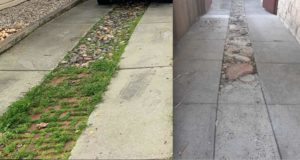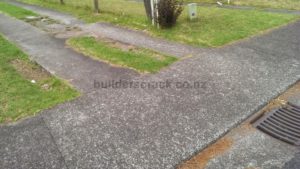
Top Outdoor Flooring Ideas For Your Patio
Revamping your patio can transform your outdoor living space into a beautiful, functional area perfect for relaxation and entertainment. Choosing the right outdoor flooring ideas
Fixing Unpleasing Old Concrete Driveway Strips
For many of us, the ugly old ribbon strip driveway is an unfortunate reality every morning we get in the car. Too often for homeowners, this type of paving problem is relegated right down the bottom of a homeowner’s never-ending ‘Santa’ style to-do list. “I’m going to get around to this one day”, or more optimistically, “once I win the lotto!”.
It’s easy to overlook how well your original 50-year concrete driveway has lasted. What other product could have stood up to 50 years of daily vehicle traffic? The constant degradation from UV rays, wind and water erosion from constant vehicle traffic.


Despair no longer! While that old problem on your list hasn’t gotten easier, there’s a new way of solving it!
You don’t need to go all-out and rip up all that old cement. You don’t even have to get paving contractors in! This video demonstrates the problem can be solved by prior planning and preparation, combined with a choice of a premium product like our StoneSet Stone & Resin Kits.
But first, it helps to understand why you’ve come to have two strips of cement running down the length of your driveway, and why you can still use those two existing cement strips for another 50 years to come.
Australia experienced a building boom after World War 2. This is because much of Australia’s residential buildings stopped during the war. Most of Australia’s tradesmen were either directly involved in the war effort or were pulled into the roles of other essential services domestically.
By the war’s end, there was a huge amount of backed-up residential building demand. Not only was labour no longer committed to the war, but construction was further boosted by a massive amount of immigrant labour – refugees of those countries, such as Italy, fleeing the war and Europe generally.
The combination of a building boom and large amounts of available labour meant a relative shortage of building materials, such as concrete and cement. This gave rise to a situation virtually opposite to the one Australia has today – The 1950s saw a combination of cheap labour and relatively expensive building materials.
That meant builders had to be more efficient in their use of materials but could afford to spend more labour/time in applying materials. The hassle of laying two separate tyre strips was far cheaper than the current-day alternative of pouring one large single cement slab.
Notes
Being the middle, filling the centre strip could be done with a much cheaper option of grass, sandstone blocks, and even river pebbles could be used as they didn’t experience weight and compaction from car tyres.
But these sections aged far worse over the years than the surrounding cement. The gradual compaction of soil and weed growth, the gaps that open when cement falls away from the sandstone crazy paving and the loose river stone that needs to be constantly swept back into place. These are just some of the issues that result in an ugly and dysfunctional driveway.
This video explains all the advantages of using a 6mm quarried stone such as StoneSet. Durability, colour matching, permeability. These are all the advantages of a fantastic resin-bound solution to last you 10 or 20 years down the track!
"*" indicates required fields
Quick Links

Revamping your patio can transform your outdoor living space into a beautiful, functional area perfect for relaxation and entertainment. Choosing the right outdoor flooring ideas

Building a home in today’s environmentally conscious world goes beyond aesthetics and comfort; it’s also about responsibility. Sustainable house designs minimise the impact on our

Modern home design constantly evolves, with homeowners and architects searching for innovative solutions that blend aesthetics, functionality, and sustainability. As urban spaces become more premium,